The Iranian biggest celebration of the year (Spring
Festival)
The first day , after
the end of the solar year, the
time of vernal equinox, the first day of Spring.
This day signifies
rebirth and is a time of great joy and celebration in Iran. It also has an
ancient symbolic representation which is based around the idea of the triumph of
good over evil.
یکی از زیباییهای نوروزهمزمانی تحویل سال در همهی دنیاست. ارتفاع خورشید در تابستان پایین، و در زمستان بالاتر است. ولی اگر روی خط استوا بایستیم، در همه ماههای سال خورشید بین شمال و جنوب در حرکت است. در سال دو بار، خورشید نسبت به خط استوا در حالت عمود قرار میگیرد که این دو اتفاق را نوروز و مهرگان می نامیم.
.
تعیین لحظهی تحویل سال، نسبت موقعیت زمین به خورشید است و کجای کرهی زمین بودن ربطی به تحویل سال ندارد. چرا
لحظهی تحویل سال، هر بار حدود۶ ساعت جلوتر از سال قبل است؟ چون در یک گردش365.25 روزه زمین به دور خورشید، جمعاً 0.25 روز هر سال را به صورت حدود ۶ ساعت تغییر در لحظه ی تحویل سال جدید میبینیم.
آغاز: تحویل سال نو
۱۳۸۹
شمسی در ایران:
شنبه ۲۹ اسفند ۱۳۸۸
ساعت ۲۱ و ۲ دقیقه و ۱۳
ثانیه
در لس آنجلس:
۲۰ مارچ ۲۰۱۰ میلادی
10:32:13

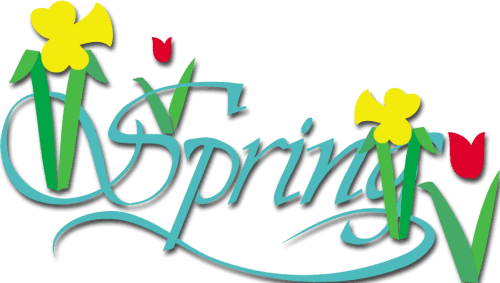
This day of great celebration was
named Norooz or Nowruz (New day),
and is recognized as the first day of the Persian
New Year
on the Iranian solar calendar.
It is the beginning of the year
for the people of Iran, Azerbaijan,
and Tajikistan. Other
Asian republics of the former Soviet Union
are joining the group, and the latest report says that
Turkey too has decided to
declare Nowruz a holiday. It is also celebrated as the new year by the people
of the Iranian stock ,
particularly the Kurds,
in the neighboring countries of Georgia,
Iraq,
Syria, and
Turkey.
It begins precisely with the
beginning of spring on vernal equinox, on
about March 20-21.
The
peoples of the Iranian cultures, whether Zartoshtis,
Jews,
Christians,
Muslims,
Baha'is, or others, have,
under Arab, Turk, Mongol, and Iranian rulers, celebrated Nowruz precisely at the
time of vernal equinox, the first day of Spring.
Festival of Norooz lasts for 13
days. The first five days is official holiday in
Iran, but schools and many private sectors are closed for all 13 days.
The Babylonians observed a 12 month
solar year, and a twenty four-hour day made up of twelve two-hour segments. The
New Year began in the month of Akitu in the Spring with the public
reading of Enuma Elish. The New Year was marked by a festival of
approximately twelve days,
Puru of
Yahali
 Persian
New Year (First Day of Spring, A New Season)
Persian
New Year (First Day of Spring, A New Season)

خانه تكاني
Norooz is a time
of renewal and symbolizes rebirth, awakening, cleanliness and newness which is
likely to share its roots with the Spring Cleaning in the American
culture
.
They prepare for
several weeks before hand. Before the new year, Iranian start cleaning their
houses (Khaane Tekaani),
they either make or buy new clothes & shoes.
سبزه
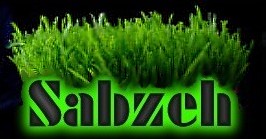 (Meaning green shoots ) A
few weeks before New Year, people put grains of wheat or barley or lentils in
a little dish to grow to use as (Sabze). By the time New Year arrives the grains
have produced shoots, remind people of spring and a new year of life. This
decoration is a symbol for growth and prosperity and must be kept in the house
for thirteen day after which it is thrown into the river.
(Meaning green shoots ) A
few weeks before New Year, people put grains of wheat or barley or lentils in
a little dish to grow to use as (Sabze). By the time New Year arrives the grains
have produced shoots, remind people of spring and a new year of life. This
decoration is a symbol for growth and prosperity and must be kept in the house
for thirteen day after which it is thrown into the river.
حاجي فيروز

:is
the black faced character who is the traditional herald of the Nowrooz season
and begins to wander the streets and alleyways in his red costume weeks before
the end of the year & who has come to serve as a mascot for Nowruz celebrations,
because it is he who symbolically notifies people of the changing seasons. The
sound of his songs , telling all that Nowrooz is in the air. Haji's intentions
and spirit have always been well received and loved by the people.

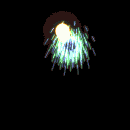

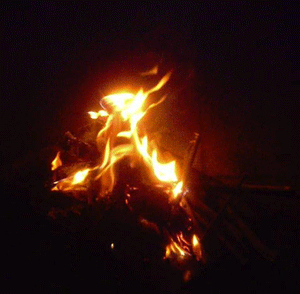
The Norooz
Festival begins with the
Chahar Shanbe Soori "Wednesday Fire". Every
family celebrates the Chahar Shanbe Soori on Tuesday evening (the night before
the last Wednesday). The part of this night especially popular is the bonfire.
The lighting of bonfires in hopes of banishing unlucky events and bringing joy
to the new year. Every family
gathers several piles of wood or brush to be lit shortly after the sunset. All
family members line up and take turns jumping safely along (and over) the
burning piles, singing to the fire:
"Sorkheeyeh
toe az man; zardeeyeh man az toe. "Your
redness (health) is mine; my paleness (pain) is yours."
"Your
redness (health) is mine; my paleness (pain) is yours."
قاشق زني
Ghaashogh Zani:
Another routine of the Chahar Shanbe Soori festival is the
Iranian version of Trick or Treating or ( Ghashogh zani). Flocks of often young
trick or treaters, hidden under a traditional Chador (veil) go from door
to door banging a big spoon against a metal bowl asking for treats.
هفت سين
 (
7S's ): At the time of begining of the New Year, the entire family, all dressed
in their best stay home ,
gathers around a "Sofreh Haft Seen"( Table
of 7S's ) and
eagerly await the announcement of the exact time of vernal equinox over radio or
television. The time the New Year
starts changes every year and is called ‘Tahvil’ .
They put seven items on the table-linen that all
start with "S". This is called "Haft Seen". with an arrangement of several
items, each of which symbolizes a wish or theme. Items in this arrangement,
seven of them, starting with the Farsi letter "seen" (the English "S"), must
always be included. The Farsi translation of number seven is "haft" -- hence the
name Haft Seen.
(
7S's ): At the time of begining of the New Year, the entire family, all dressed
in their best stay home ,
gathers around a "Sofreh Haft Seen"( Table
of 7S's ) and
eagerly await the announcement of the exact time of vernal equinox over radio or
television. The time the New Year
starts changes every year and is called ‘Tahvil’ .
They put seven items on the table-linen that all
start with "S". This is called "Haft Seen". with an arrangement of several
items, each of which symbolizes a wish or theme. Items in this arrangement,
seven of them, starting with the Farsi letter "seen" (the English "S"), must
always be included. The Farsi translation of number seven is "haft" -- hence the
name Haft Seen.
The Haft Seen spread is usually put out a couple of weeks before the Norooz day
and symbolizes the holiday season and its special mood very much like the
Christmas Tree for the Western holidays. seven (Haft) trays, full of symbolic
objects representing truth, justice, light,
warmth, life, love, joy, production, prosperity, virtue, immortality and
generosity and natur. The seven items
starting with the letter "seen" in the contemporary
Haft Seen are:
Samanu
(a Persian snack made of flour and sugar)
Sekeh (coin)
Sabzee (green shoots ,
Grass,vegetables)
Sonbol (the hyacinth
flower)
Seer
( Fresh garlic) to
warn off bad omen.
Senjed (A dried fruit
-bohemian olive or jujube fruit
sresembling that of the mountain-ash tree)
Serkeh (vinegar)


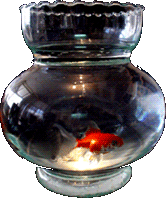



Other items often included with the
Haft Seen are (Seeb:Apples),(Sumac-a
herb) Baklava,
Nune Shekari which is a sugar
cookies or pastries called Shirini,a
copy of their holy book, the
Shahnameh
by "nationalists," and the "Divan" of Hafez
by the "romantic”) a
mirror,
candles, hard-boiled
colored eggs like
"Easter eggs," , symbol of fertility corresponding to the mother
earth,bowl of rose water.
and Live goldfish in
a fish bowl .
Looking at the goldfish at the turn of the year is
believed to bring good luck and fortune , flowers,
fruits,
bread . Rose
water is sprinkled into the air and
Espand
a popular incense is burnt, to keep the evil eye away.
شب قبل از سال نو


Traditionally the night before the New
Year, most Iranians will have ‘
Sabzi Polo Mahi
’; rice cooked with fresh herbs
served with smoked and freshly fried fish.
سال تحويل



The time the New Year
starts (the
exact time of vernal equinox )
changes every year and is called ‘Sal
Tahvil’ . After
the cannon has sounded (The Sal Tahvil:Begining of
New Year), people hug and kiss each other and wish
each other a happy new year.
 تبريك
تبريك


Norooz mobarak:
Happy Norooz
Norooz pirooz: Norooz be
prosperous
Sal-e no mobarak: Happy new
year
Sad sal beh in sal-ha: May
another hundred years be as happy and
joyous as this one
(referring to the holiday feeling).
عيدي
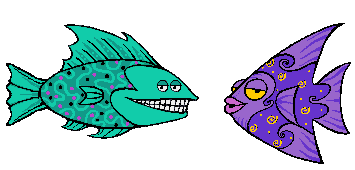

Usually
older ones give (Eidi).
Eidi is often coin or cash to the
younger ones. Sweets are offered to all to symbolically
sweeten their lives for the rest of the year . During
the holidays, people go to see their relatives & friends begin.
Each visit is reciprocated. .When the guest is leaving, the host gives some "Eidi"
to the kids, it is not very common to give toys as the Eidi.
سيزده
بدر



At the thirteenth day of the new year
(the end of the Norooz festival), the people go to picnics to
countryside . This is called Seezdah
Bedar"getting rid of thirteen".. This is the
most popular day of the holidays . All
kinds of food and delicacies are prepared , Music
is every where, People
sing, dance , Play games and sports, Drink,
Eat..yes its a big party.


Young single women
tie the sabzee leave(s) prior to discarding it,
symbolizing the wish to be tied in a marriage by the Seezdah Bedar of next year!
People throw the
Sabze (green Grass,vegetables)
away, they believe
Sabze should not stay in the house after Seezdah
Bedar.The sabze is
supposed to have collected all the sickness, pain and ill fate hiding on the
path of the family throughout the coming year! Touching someone else's
sabze on this thirteenth day
or bringing it home is therefore not a good idea and may result in absorbing
their pain and hardship.
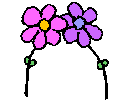
Susanne
Pari. She tells the story of one year, when her childhood home was
robbed during the New Year's festivities, and how the revolution in Iran changed
the meaning of celebrating New year.Susanne
Pari is the author of the novel, The Fortune Catcher
NPR RADIO
Persian New Year is one of those
valuable things based on the family and culture that when truly understood, can
make a person very proud of their cultural identity. Every year, Iranians around
the world attend the celebration & continue to preserve the core of this
tradition, & future generations retain some of the magic experienced by their
predecessors.































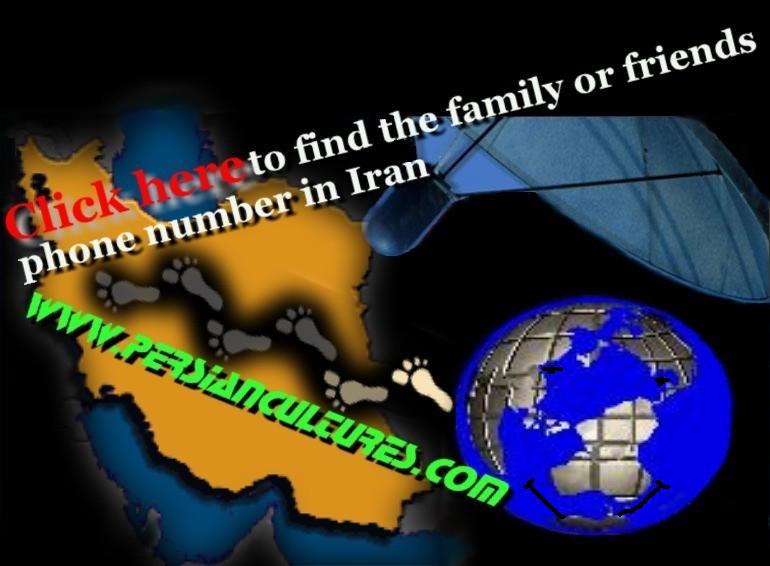
محبوبترین آهنگهای تاریخ راک The best Rock music in history
Free Pictures for download (100sites)دانلود عکسهای مجانی
سایت های آپلود رایگان عکس Free photo upload sites
Pictures from Iran عکسهائى از ايران
Video Resources منابع ویدیو
Cool Sites سایت های جالب
Persian Peoples Photos
Video & Sound Editors